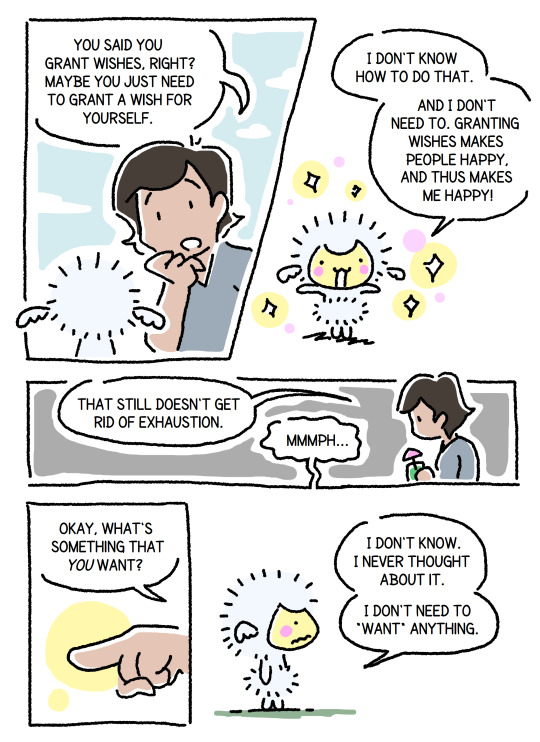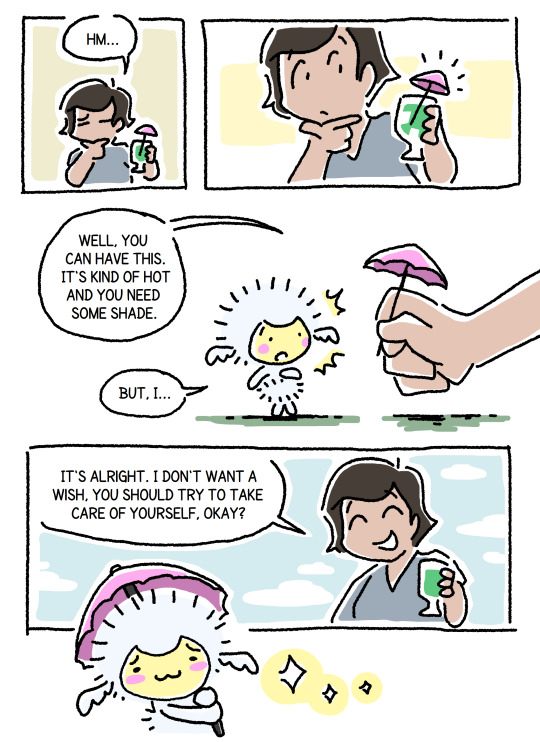Just some stellar remnants, reblogging the universe. If you're not a donkey don't be an ass. Pronouns: They/Them. Age: 21+
Don't wanna be here? Send us removal request.
Text
#my wife is on the SOR for being gay #no joke #she hit on a girl in a straight bar once #in 1997 #and while the girl was into it #the off duty cop sitting nearby was not #and so he arrested her for ‘soliciting homosexual activity’ #which in our state was still a felony #in 1997 (and would remain so until Lawrence v Texas in 2003) #and since ‘soliciting homosexual activity’ was a felony and a sex crime #she got put on The List #she is still on there to this day #because it costs MONEY to ask a judge to take you off #and she has tried four times#since 2003 #to get taken off the SOR #but every time the judge has said something like ‘no you pled guilty to the crime i can’t possibly take you off the sex offender registry’ #with no acknowledgement of what the actual crime was #(the crime of being a butch lesbian hitting on a cute girl who was into it) #(in 1997)
Reposting these tags with consent from the person that wrote them. The post about the Sex Offenders Registry is locked, but these tags are too important to go unnoticed.
Younger queer people need to realize that the SOR being used against queer people simply for being queer isn’t some ancient history thing. It still impacts queer people today. And it can quite easily be used that way again.
72K notes
·
View notes
Text
General PSA's for begginer alt crafting
- superglue heats up when in contact with fiber, your craft can start smoking or even catch on fire
- you can wash clothing painted with acrylic paint in the washing machine if you turn it inside out and use the lowest temperature
- don't put painted clothes in the dryer.
- you can wash clothes with metal bits in the washing machine but use the handwashing setting, dry the metal bits with a paper towel before hanging them to dry, and know that it WILL be loud
- synthetic dye is needed to dye synthetic fibers and requires a long time simmering in a boiling pot. This WILL stink up the house and you NEVER want to make food in that pot again
- faux leather is vinyl not leather. Get vinyl paint to paint on it
- don't use your teeth as tools, they don't regenerate. Reconstructing enamel costs a small fortune (ask me how I know.)
- when handsewing a lot through thick fabric get thin needles, it will require less force and be less taxing on your wrists. When machine sewing get a higher grade needle (~130 for jean)
- embroidery floss is overpriced and not as strong as it looks. For sewing on heavy stuff get denim thread, it will last forever
- don't feed a 60$ home sewing machine ten layers of denim before you learn how much a servicing fee costs, these things are dellicate
- spray paint is best applied from 30-40cm away, in swift movements. Putting too much or applying from too close will cause drips. You can sand them down and apply a new layer of paint AFTER they dry. Wipe the can nozzle after painting if it's messy, you don't want it to clog and become unusable
- water based markers on fabric will bleed, if not instantly then with time, alcohol markers will fade with time
- most fabric glues are machine washable up to a certain temperature. modgepodge is not waterproof, hitack is handwash only. Check the instructions
- the flatter the surface the easier hot glue will peel off. Faux leather stands no chance, fibers like yarn will hold it best, but is impossible to remove the glue from them in the future
- rivets are a thing that exists, only require a hammer to install and can be used as permanent fabric attachment
- studs, gromets and other metal junk at small fabric stores are laughably overspriced
- acetone (found in nail polish remover) will remove acrylic stains out of furniture, flooring and faux leather, if used in excess can damage the laquer. Can also be used to remove prints and glue off of plastic (do a small test before commiting, might melt the plastic it it's grade is low)
- residue from stickers (and k-tape) can be removed with oil
- acrylic stains cannot be removed out of clothing or carpet so protect your area before painting and don't wear clothes you care about
- if your thread keeps getting tangled or snagging while handsewing try waxing it
- you can lock in screw-in spikes with screw lock glue if you're scared of them falling off because they unscrew
- you can add washers to screw-in spikes if you're scared of them falling through flimsy fabric or too big of a hole
- if you're making anything out of soda cans have a metal file on hand, they are deceptively sharp and will hurt you and rip through fabric you're installing them in
- bleach can be found in mold killing spray (don't touch that shit with bare hands. chemical burn.)
- fabric paints are no different from slightly dilluted acrylic. You can make it yourself by adding a bit of fabric softener to acrylic or honestly even water
- if you are setting anything with an iron use parchment paper or a pressing cloth to pervent your stuff from sticking to your iron and ruining it
- if you want a safety pin somewhere permanently pinch it shut with pliers
- as much as you can, avoid putting glue on clothing, it makes it really hard to change your decisions later on and upcycle the project in the future
- kiss your friends
9K notes
·
View notes
Text
You do not need to look like a tiktok influencer. You do not need to have perfect hair without any flyaway hairs or frizz, especially if you have curls. You do not need flawless skin. You do not need to wear makeup at all but you especially don't need to wear foundation, concealer, highlighter, blush, contour, and all that bullshit. You do not need flawless nails. You do not need a closet full of designer clothes (or dupes). You do not need a closet full of clothes you only wear once but that fit the latest trend. You do not need to look ready for a photo shoot 24/7.
These influencers don't even look like that! They use filters and edits on their photos and videos, they rent designer clothes, they spend plenty of time without makeup and fancy clothes, all of that. Then they go online and and make fun of completely regular looking people to make everyone else insecure and more likely to buy whatever they're selling.
Most people aren't wearing tailored designer clothes or wearing $200 worth of makeup and skincare or wearing enough product that their hair wouldn't move in a hurricane. That is fine. You are fine. Go take public transportation or visit the local library and remind yourself what real people look like in their day-to-day lives instead of letting social media rewire your perception of human bodies.
455 notes
·
View notes
Text
Here's one for the academics in the audience: in your experience, which specific discipline is most likely to have strikingly personal, dude-owes-me-money type beef with a guy who's been dead for nine hundred years? I know you get them in every field of study, of course, but I mean like statistically.
2K notes
·
View notes
Text

lil doodle from the other day born out of an overwhelming annoyance that for some reason body hair is associated with masculinity despite Everyone Having It. so why not draw a cute hairy girl about it
[image description: a drawing of a tan-skinned woman with brown and blond dyed hair pulled into a ponytail and copious body hair and stubble. she is smiling and doing a peace sign gesture with her hand. next to her is text saying "body hair has no gender!" end id]
35K notes
·
View notes
Text

"Transgender rage is more powerful than the courts.
Transgender love is more hopeful than the law.
We have always been here and no "ruling" can eradicate us!"
Seen in Belfast, Northern Ireland
4K notes
·
View notes
Text
Submissives with glasses. Just take them away from them
I can't make a few steps without my glasses on, without running into something. I can't see well enough to function at all without them. I will cling onto you to guide me. I'll have to ask you to help me drink. Help me eat. I geniuenly would have issues with it, unless you would push my face directly into a bowl
Which...still counts as helping me, you know?...
I'm pretty sure that it's the easiest way, to take so much from me. It's just glasses
And yet, without them. I would be dependent on you
-Marcela
378 notes
·
View notes
Text


Today in transphobic idiocy...
Avery Jackson did a non-medical transition at the age of four. At the time, they felt more comfortable as a girl. As they grew up and their understanding of gender evolved, they decided nonbinary transgender suited them better.
And now that they are 15, their family is moving out of Missouri because they fear the recent draconian anti-trans laws.
"No longer identifies as a girl" does not mean they identify as a boy. They are still trans. They knew from the age of 4 that being a boy was not right for them.
I don't think they changed their mind. I think they just found a better understanding of who they were.
These bigots know nothing about trans people yet think they are qualified to criticize them.
24K notes
·
View notes
Text
Anyway it's kinda funny how many americans refuse to believe that the status quo of global trade largely consists of the third world subsidizing their quality of life, and not the other way around.
3K notes
·
View notes
Text
Scalding hot take y’all aren’t ready for: Chell and GLaDOS were in fact in lesbians, but Chell was the domme and GLaDOS was the bratty sub.
Think about it: the entire game, GLaDOS runs her mouth taunting Chell as Chell calmly and slowly approaches, avoiding all of GLaDOS’s attempts to stop her, until they finally meet in person and Chell puts GLaDOS in her place.
Then in the sequel GLaDOS is back to bratting again but the moment GLaDOS is in real trouble, Chell immediately shifts into caretake domme mode to protect the sad potato that is her girlfriend (and honestly, in my experience, sad potato is a perfect description for someone going through sub drop).
Then once GLaDOS is doing better and the source of her discomfort (the obnoxious man who tried to insert himself into their dynamic before Chell dealt with him) is gone, they immediately resume their normal dynamic.
Tell me how any of that reads like Chell as the sub, hmmm?
4K notes
·
View notes








